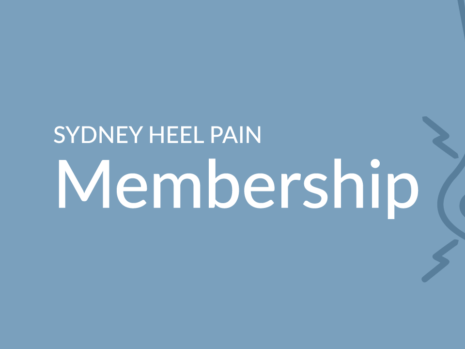Case Study 30 May 2016 – Achilles Tendonitis
A middle aged male presents with Achilles pain in both feet of approximately 4 years. He thinks he has Plantar Fasciitis due to the fact that he has heel pain, which he experiences every morning, but he hasn’t been to see a specialist nor does he have an understanding of the 2 conditions. His Achilles Tendonitis is causing pain above the heel, through the section of the Achilles Tendon that can be pinched with finger and thumb. He does not appear to have Achilles Tendinosis as his tendon is not tender to touch at the back of the heel bone.There is no heel spur at the back of the heel. The tendon appears swollen and a little thicker than usual and is also quite stiff to touch.
The patient plays soccer twice a week and wakes up very sore in the Achilles tendons. He hobbles for 15 minutes each day before the pain becomes bearable. He also feels pain throughout the day after he has been driving or sitting for a period of 20 minutes or more.
The patient has an auto-immune condition – Ankylosing Spondylitis, which can cause inflammation in the Achilles tendon.
The patient has been stretching his calves and also eccentrically loading the tendons for 6 months and this has not helped. He has seen his chiropractor who has performed mobilisations and foot adjustments. After analysing his gait – his footwear is not appropriate for his foot function and this would hinder recovery of his Achilles Tendonitis. The stress on the tendon remains while using his day to day shoes, and also his football boots.
Treatment
Shock wave therapy probe was applied to both tendons – 2000 reps on each leg. This was done at weekly intervals for 5 weeks. The patient was measured and supplied with simple heel wedges inside his shoes to relieve stress on the Achilles Tendon. He was asked to refrain from soccer until the pain had almost gone.
At the first follow up appointment a week later the patient reported he had experienced no pain throughout the day and that the pain first thing in the morning had started to subside. By the second week all pain had gone completely – however there was still some visible swelling and the pain was still there if the tendon was pinched. By the 3rd week both Achilles Tendons were supple and felt soft again. After week 4 the swelling had subsided and there was no pain to pinch – only pressure – which is a normal response. The patient was asked to play soccer at training by week 5 which he did. He felt no pain, just a little stiffness during training and he woke up with no symptoms the next morning. That weekend he played half of the soccer match at full pace and felt fine during and after the game, and the following morning.
Patient was asked to maintain good calf range with very specific calf stretches and also apply ice packs to the Achilles area. He did not need orthotics to control any bio-mechanical issues nor dry needling as his calf muscles responded well to the stretch.
Written by Karl Lockett


